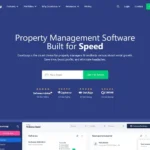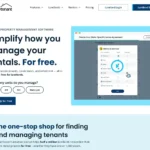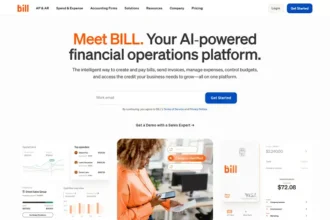In the shifting world of digital advertising, data privacy changes (think: cookie deprecation, iOS updates) are making old methods of tracking and attribution less reliable. For growth marketers, e-commerce brands, and agencies striving for real results, that creates a serious challenge. Enter AdBeacon — a platform built to leverage first-party data, offer real-time attribution, and unlock optimisation across ad channels when traditional tracking falls short.
By connecting your own store and ad-data directly with advanced attribution models, AdBeacon helps you stop guessing and start scaling with clarity.
What Is AdBeacon?
AdBeacon is a SaaS platform focused on ad campaign optimisation, media attribution, and audience segmentation for e-commerce brands and agencies.
The platform emphasises first-party data usage (your own customer, purchase, store data) rather than relying solely on third-party aggregated metrics. This makes it particularly relevant in the post-privacy era where channels are less transparent and the “last-click” model is increasingly challenged.
Key Features of AdBeacon
Here are some of the standout features that give AdBeacon its edge:
- Multi-Touch Attribution & Custom Models: Supports First Click, Last Click, Linear, Full Impact attribution, plus their proprietary “Lighthouse” model for advanced insights.
- First-Party Data Integration: Connects directly with your e-commerce store (Shopify, WooCommerce, BigCommerce) and ads channels to leverage your real purchase data.
- Real-Time Campaign Optimisation: Monitor performance live, adjust budgets, creatives and audience segments in the platform without waiting days for reports.
- Audience & RFM Analysis: Segment your customers by Recency-Frequency-Monetary value, build high-value audiences, target returning vs new customers.
- Creative Dashboard: Identify which ads/creatives are driving the best ROI, thumb-stop rates, ad fatigue etc, so you can double-down where it matters.
- Inventory & Product Insights: Align ad spend with inventory data, see which products purchase behaviour is driving campaigns and new vs returning purchase patterns.
How AdBeacon Works
Here’s a simplified workflow of how a merchant or agency might use AdBeacon:
- Connect your store & ad channels – Link your e-commerce platform and ad account(s) (Facebook, Google, etc) so AdBeacon can access purchase events and click data.
- Configure attribution model & segments – Define which attribution logic you want (e.g., first touch, last touch, or custom), set time windows, define new vs returning, build RFM segments.
- Monitor campaigns and data in real time – Use AdBeacon’s dashboard to view actual purchase data tied to ad campaigns, see ROAS, LTV, customer cohort behaviour.
- Take action inside platform – Build audiences, adjust budgets, pause underperformers, scale high-value ads; use insight to optimise creative, targeting & spend.
- Analyse and iterate – Use deeper visualisations: customer journey paths, high value customer identification, product-level ad performance, then feed back into campaign strategy.
With this flow, the goal is to turn raw ad spend into actionable insight, rather than relying on delayed or opaque channel-reported metrics.
Why Marketers Choose AdBeacon
Marketers and agencies choose AdBeacon because of the growing need for precision, speed, and transparency in advertising. Specific reasons include:
- Traditional ad platforms (Facebook, Google, etc) have diminishing visibility due to privacy updates; AdBeacon offers clarity via first-party data.
- For e-commerce brands, being able to directly tie ads to purchases, product data and customer segments means better control of ROAS and LTV.
- Agencies value that they can show clients accurate attribution, avoid inflated or misleading numbers, and optimise media spend more effectively.
- Real-time performance allows faster iteration and scaling; no longer waiting days or weeks for meaningful results.
- With RFM and audience segmentation, they can focus not just on acquisition but on retention and higher-value customers over time.
Pros and Cons of AdBeacon
Pros:
- Real-time, accurate attribution using first-party data: gives clearer view into which campaigns truly drive revenue.
- Supports custom attribution models and longer look-back windows than many channels.
- Strong segmentation features (RFM, new vs returning) allow deeper customer understanding.
- Integrations with major e-commerce platforms and ad channels make setup easier for online merchants.
- Designed by media-buyers for media-buyers: intuitive UI with actionable tools.
Cons:
- May require time and proper setup: connecting data sources, defining models and segments takes effort to get right.
- Smaller businesses with less e-commerce data may see less benefit versus large scale brands.
Final Thoughts
In the current landscape of digital marketing, where tracking is harder and reliable data is more valuable than ever, AdBeacon offers a compelling solution. For e-commerce brands and agencies committed to scaling profitably, understanding contribution of every ad dollar, and optimising not just for clicks but for real revenue and customer value, AdBeacon is a strong candidate.
If you’re running paid media campaigns across platforms and feeling frustrated by opaque metrics or slow iteration cycles, AdBeacon is worth exploring.
Accurate. Actionable. First-party-powered. That’s AdBeacon.
It’s time to check it out — Get AdBeacon Now












